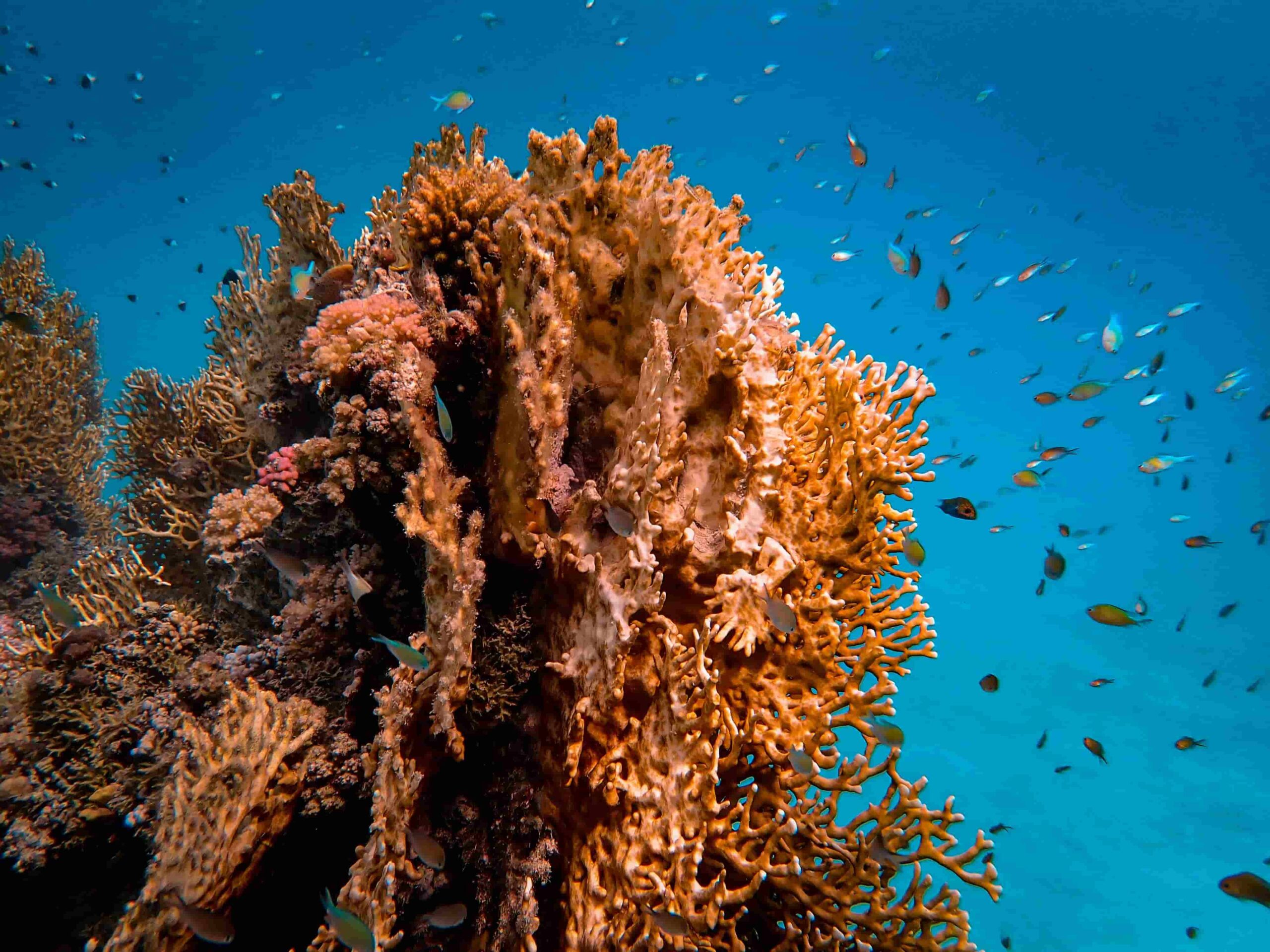What is coral and what is coral color is the topic of this article. Various tones of coral include orange, red, and pink representations of precious corals.These are a vibrant pink-orange hue named after the colors of precious corals, marine invertebrates found in the ocean. The coral hex code is #FF7F50, which breaks down into 100% red, 49.8% green, and 31.4% blue in RGB color space and 0% cyan, 50.2% magenta, 68.6% yellow, and 0% black in CMYK color space.
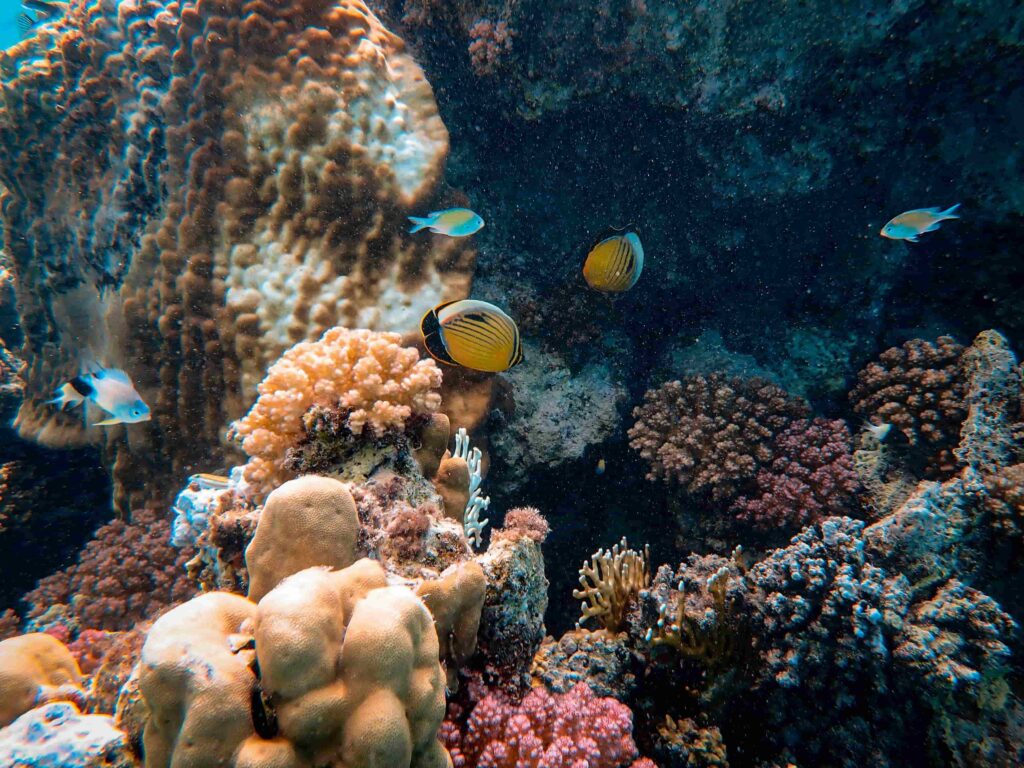
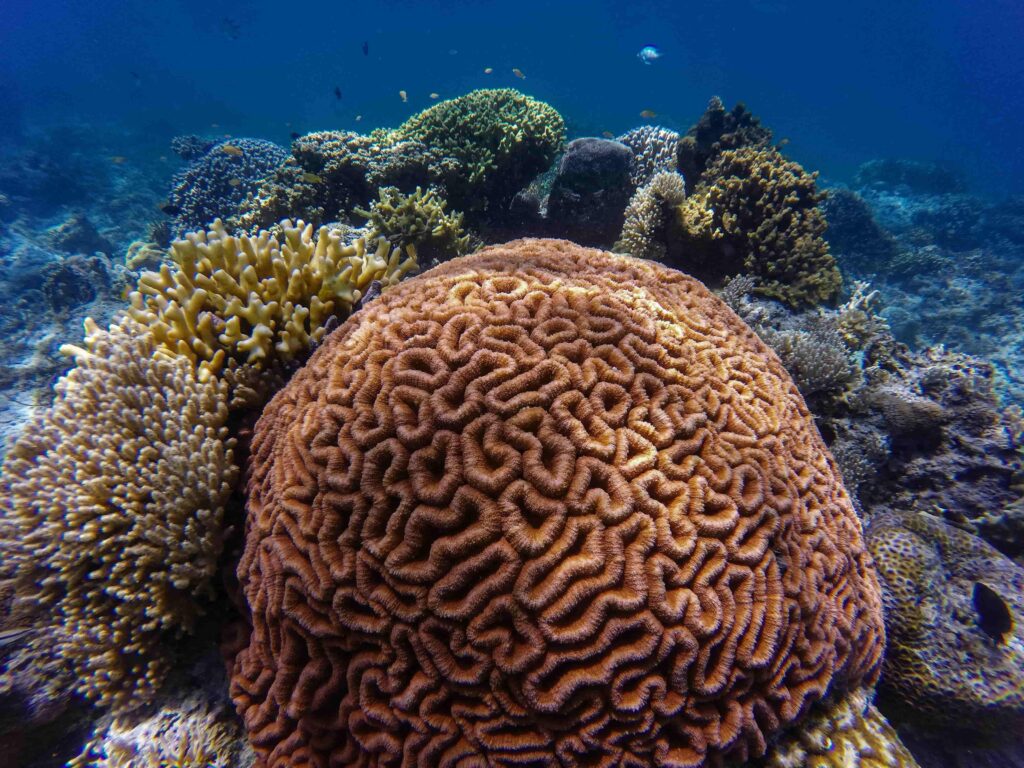
Differences between coral and coral reefs
Based on the search results, the key differences between coral and coral reefs are:
- Coral is a live animal, while a coral reef is a physical underwater structure.
- Coral reefs are ecosystems made up of millions of coral polyps, which are tiny marine invertebrates related to sea anemones and jellyfish.
- Coral polyps secrete calcium carbonate to form a hard exoskeleton, and over many generations these polyp colonies build up into the large underwater structures we call coral reefs.
- Coral reefs provide habitats and support a diverse range of marine life, while coral polyps themselves feed on plankton and small organisms.
- Coral reefs can take different forms such as fringing reefs, barrier reefs, and atolls, while individual coral polyps have a more uniform cylindrical shape.
- Coral reefs cover a relatively small area of the ocean (0.1% of the ocean floor) but are incredibly diverse and productive ecosystems.
In summary, it is a live animal that builds coral reefs, which are the large underwater structures formed by colonies of the polyps over long periods of time. The coral reef ecosystem is distinct from the individual coral polyp organism.
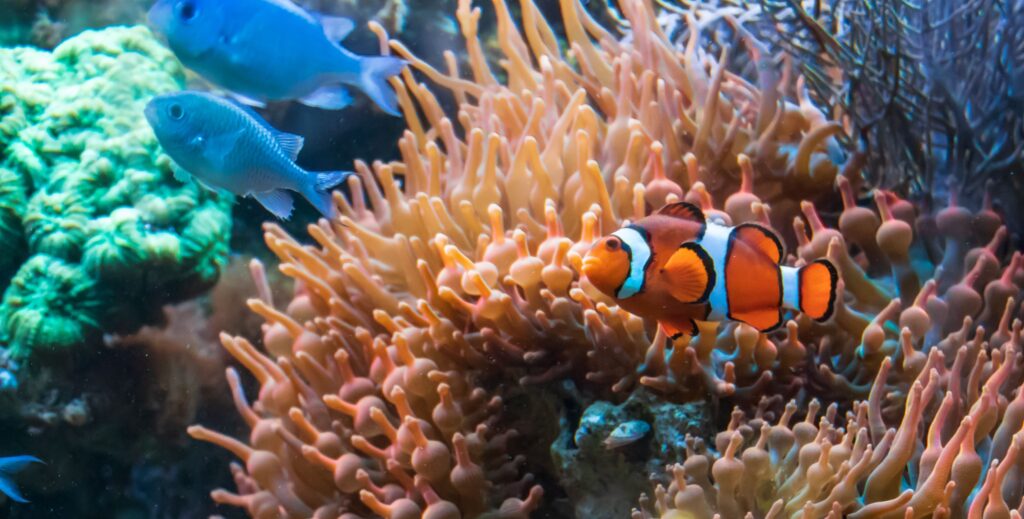
Why Coral color is important for a Coral?
Coral color is important for a coral because it plays a crucial role in the coral’s survival, health, and interaction with its environment. Here are some key reasons why coral color is significant:
Protection from UV Rays:
Coral coloration can act as a natural sunscreen, protecting the coral from harmful UV rays. This is especially important for corals living in shallow waters where UV rays are more intense. By changing color to shades of blue, purple, or pink, corals can protect themselves from damage caused by UV radiation.
Food Production:
The color of corals is influenced by the presence and activity of zooxanthellae, which are photosynthetic algae that live inside the coral. These algae produce nutrients through photosynthesis, which are essential for the coral’s survival. The amount of chlorophyll produced by the zooxanthellae affects the coral’s color, and this in turn affects the amount of nutrients available to the coral.
Environmental Indicators:
Coral color can serve as an indicator of the coral’s health and its ability to adapt to environmental conditions. Changes in color can signal stress or damage caused by factors such as pollution, ocean acidification, or unusual temperature fluctuations.
Communication and Attraction:
Coral coloration can also play a role in communication and attraction. For example, brightly colored corals may attract fish and other marine animals that help to maintain the coral’s health and provide additional nutrients.
Evolutionary Adaptation:
The ability of corals to change color in response to environmental conditions has evolved as a mechanism to help them survive and thrive in different ecosystems. This adaptability allows corals to occupy a wide range of habitats and to respond to changing environmental conditions.
In summary, coral color is important because it plays a vital role in the coral’s ability to protect itself from UV radiation, produce food through photosynthesis, adapt to environmental conditions, communicate with other organisms, and evolve to occupy different ecosystems.
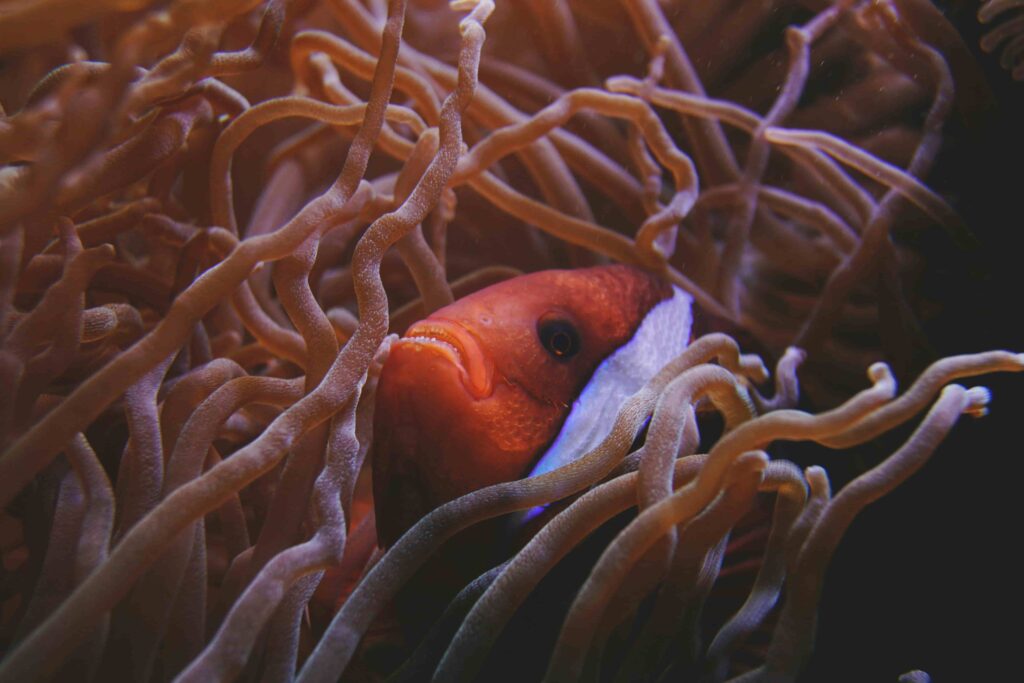
What do coral eat?
Coral polyps, the individual animals that make up colonies, feed on a variety of food sources. The principal elements of their diet consist of:
Bacterioplankton:
Most of these feed heavily on bacterioplankton, which are small bacteria that float in the water.
Zooplankton:
They also consume zooplankton, which are small, free-swimming animals like copepods and amphipods.
Phytoplankton:
Some of these, particularly azooxanthellate soft corals, feed on phytoplankton, which are small plants that float in the water.
Dissolved Organic Material (DOM):
They can absorb DOM, which is a source of nutrients, directly into their cells.
Large food items:
Some of these are, especially those with larger polyps, can capture and eat larger food items like small fish.
Symbiotic algae:
They also have a symbiotic relationship with photosynthetic algae called zooxanthellae that live inside their cells. These algae produce nutrients through photosynthesis, which they use for energy. However, they can also digest and use excess algae for nutrition.
Mucus and particulate organic matter:
They can also acquire nutrients by secreting mucus, which traps food particles and is then ingested.
Food from fish and invertebrates:
In aquariums, they can benefit from the food that is fed to other fish and invertebrates, as well as from the occasional large food item that floats by or lands on them.
In summary, they are opportunistic feeders that consume a diverse range of food sources, including bacteria, small animals, plants, and even their own symbiotic algae.
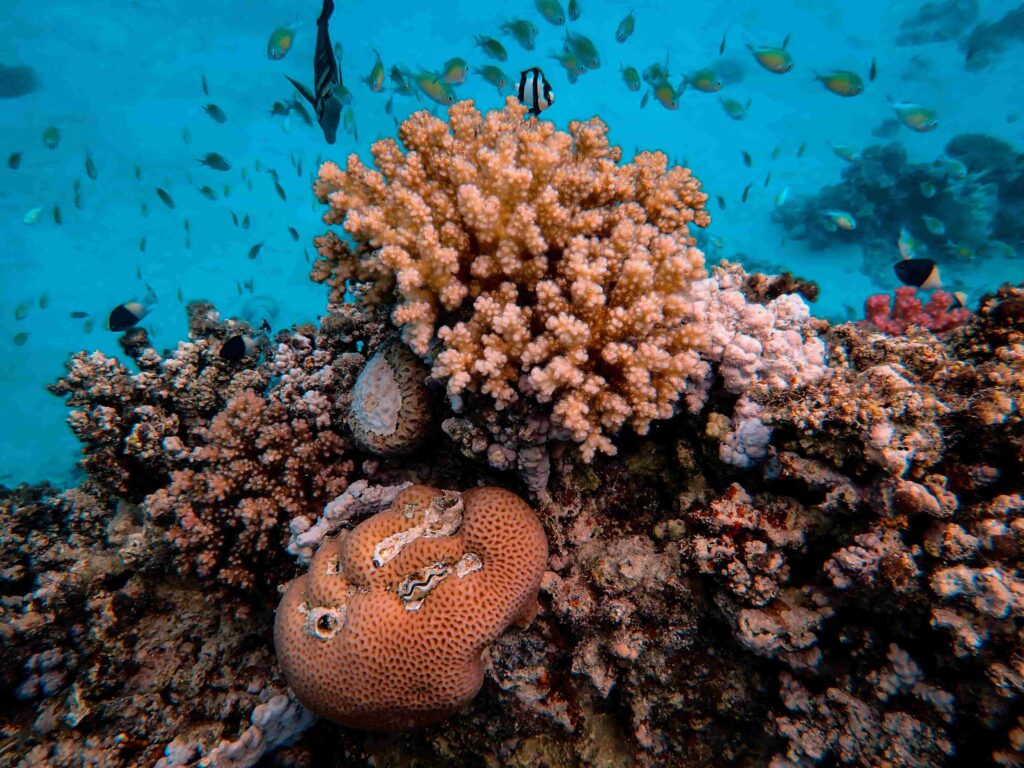
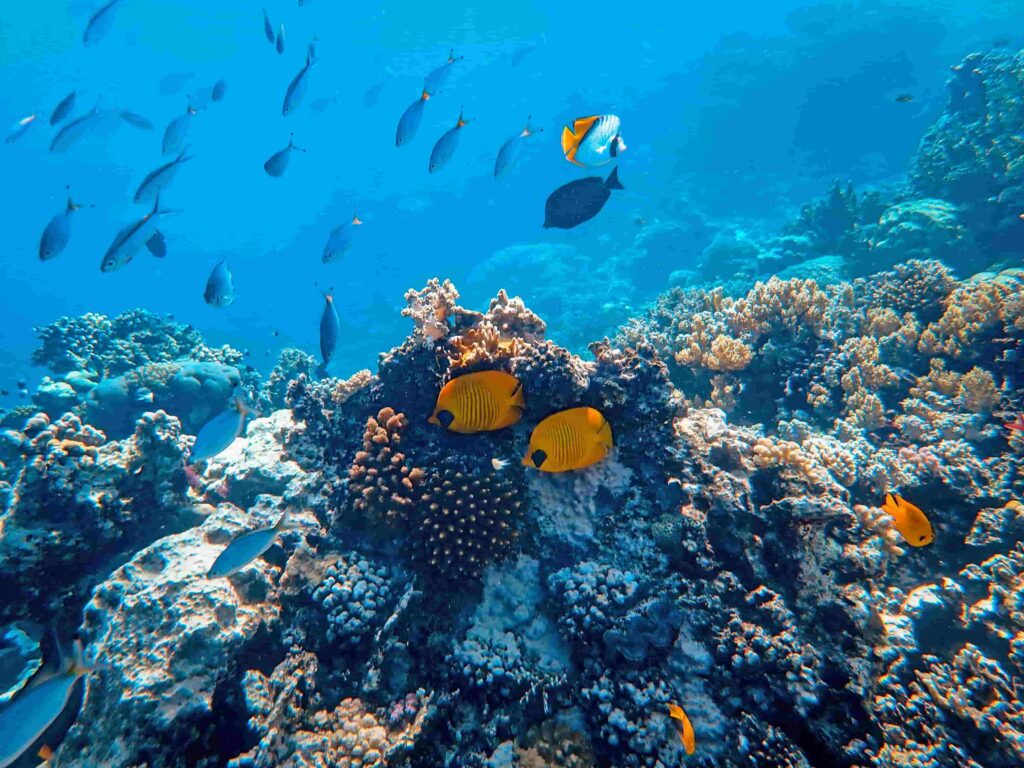
Appearance of corals
Based on the search results, here is a detailed description of the appearance of these: They come in a wide variety of shapes, sizes, and colors, but they all share some common physical characteristics as animals:
Coral polyps:
They are made up of tiny individual animals called polyps. Every polyp consists of a cylindrical body with tentacles surrounding the mouth at the top.
Soft vs. hard corals:
There are two main types of them – soft corals and hard (stony) corals. Soft corals like sea fans and sea pens have a flexible, fleshy body supported by spiny structures called sclerites, while hard corals secrete a rigid calcium carbonate skeleton.
Coral colors:
They get their vibrant colors from symbiotic algae called zooxanthellae that live within their tissues. The algae’s pigments, like chlorophyll, give them shades of green, brown, yellow, and even pink, red, or blue. The coral’s own skeleton is actually white, and the color fades when the coral dies.
Coral shapes and growth patterns:
Coral colonies can take on a wide variety of shapes, including branching, table-like, finger-like, encrusting, and massive boulder-like forms. The specific growth patterns are characteristic of each coral species.
Coral size:
Individual coral polyps are quite small, ranging from 0.04 to 1.2 inches (0.1 to 3.1 cm) in diameter. However, entire coral colonies can grow to massive sizes, with some reaching up to 6.6 feet (2 meters) in diameter. In summary, corals are colorful, living animals that form diverse and intricate structures in the ocean, ranging from delicate, feathery soft corals to robust, boulder-like hard corals in a rainbow of vibrant hues.
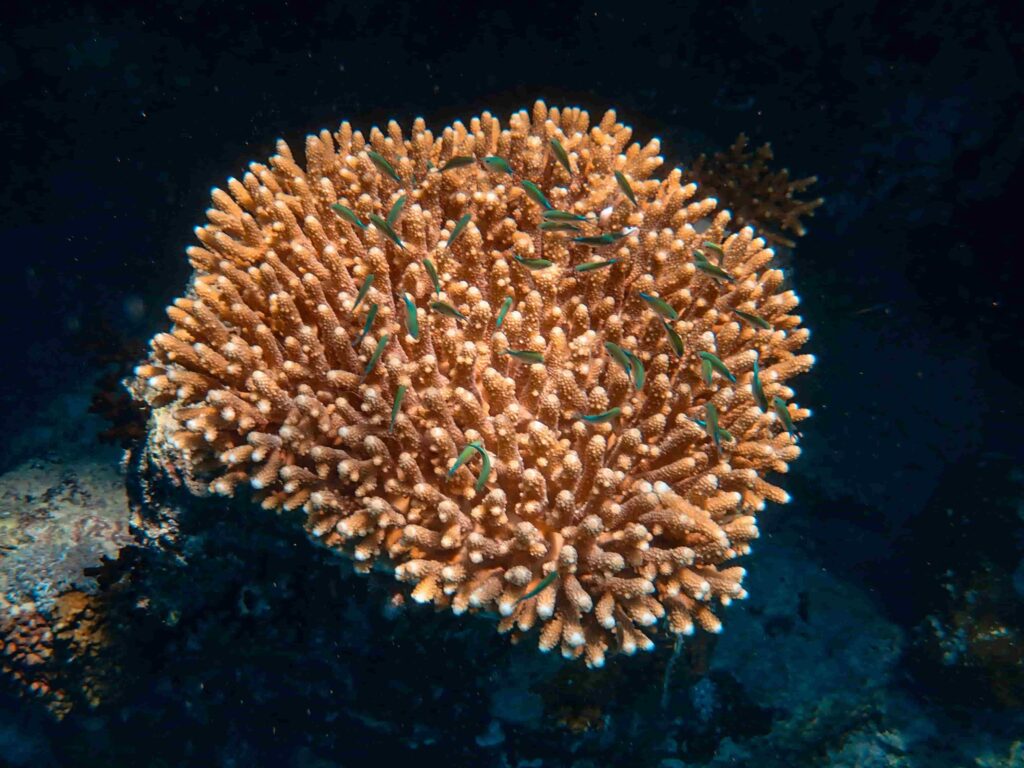
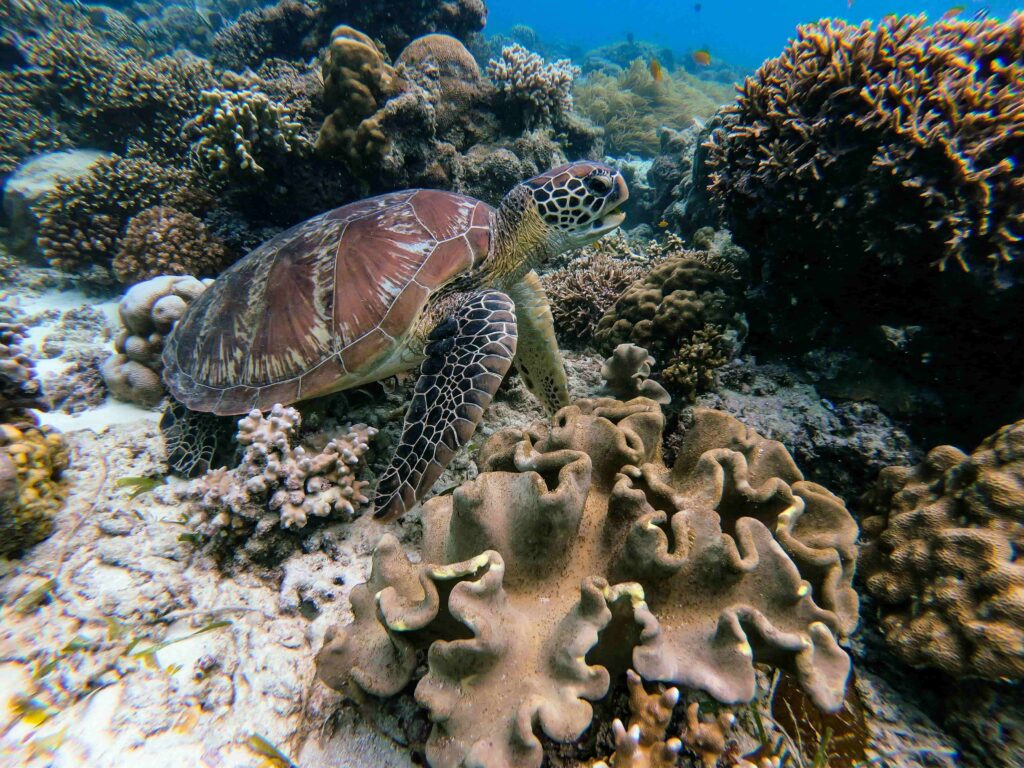
What is coral island?
Coral Island: A Tropical Paradise:
A coral island is a type of island formed from coral detritus and associated organic material, typically found in tropical and sub-tropical areas. These islands are part of a larger coral reef system and are characterized by their low elevation above sea level, often with coconut palms and white coral sand beaches.
Formation and Ecology:
Coral islands begin as volcanic islands over hot spots. As the volcano emerges from the sea, a fringing reef grows on its outskirts. Once the volcano moves off the hot spot, it undergoes subsidence, and the coral must continue growing to stay in the epipelagic zone. This process creates an atoll with a shallow lagoon in the middle, which eventually becomes a coral island. Coral reefs are crucial for biodiversity and the growth of fish populations. For numerous marine animals, they serve as homes, food sources, and breeding sites.Coral islands are also important for maintaining coral reefs, as they help to support the growth of coral polyps and other marine life.
Types of Coral Islands:
There are two main types of coral islands: uplift and accretion. Uplifted coral islands are formed when part or all of a reef system becomes land due to crustal movements raising it above sea level. Accretion coral islands develop from rubbly reef rock broken off from the reef by storms and waves, mixed with finer reef detritus.
Distribution and Stability:
Coral islands are found in the Pacific, Atlantic, and Indian Oceans. They are often small and low-lying, making them vulnerable to storms and rising sea levels. Despite these challenges, coral islands have long been home to various cultures, such as the Polynesians and Micronesians in the Pacific, and the Maldivians in the Indian Ocean.
Coral Island Game:
“Coral Island” is a farming simulator game where players can build their dream farm, tend crops, nurture animals, and explore the island. The game features a diverse cast of characters, a variety of activities, and a relaxing atmosphere. Players can choose their own style, build relationships, and restore the island to its former beauty.
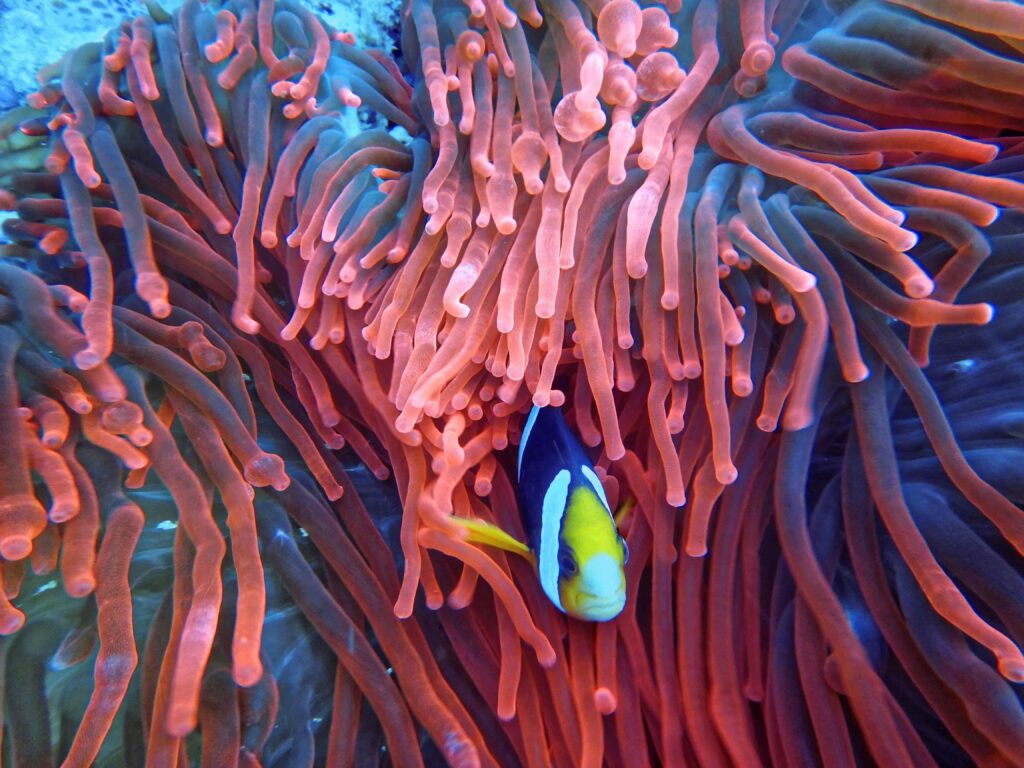

Famous coral islands around the world
Coral islands are a fascinating aspect of the world’s marine ecosystems. These islands are formed from coral detritus and associated organic material, typically found in tropical and sub-tropical areas. Here are some of the most famous coral islands around the world:
Great Barrier Reef, Australia
- The world’s largest coral reef system, spanning more than 2,300 kilometers.
- Home to over 1,500 fish species, 6 turtle species, and 5000 mollusc species.
- One of the Seven Natural Wonders of the World and a UNESCO World Heritage Site.
Raja Ampat, Indonesia
- Known as the “Species Factory” due to its incredible biodiversity.
- Comprises 450 different species of corals and over 1,600 fish species.
- Located in the Coral Triangle, it is a popular destination for divers and snorkelers.
Red Sea Coral Reefs, Red Sea
- One of the oldest coral reef systems, formed around 5,000 to 7,000 years ago.
- Features 300 species of hard coral and 1,200 fish species.
- Known for its unique charm and ability to withstand temperature changes and salinity fluctuations.
Rainbow Reef, Fiji
- Located in the Somosomo Strait, it is known for its vibrant coral and marine life.
- Features over 230 species of soft and hard corals and over 1,250 fish species.
- A popular destination for divers and snorkelers due to its powerful tidal currents and diverse marine life.
Maldives
- Comprises 1,200 islands and 26 atolls.
- Known for its beautiful coral landscapes and vibrant marine life.
- Despite coral bleaching due to climate change, there are encouraging signs of recovery.
These coral islands are not only breathtakingly beautiful but also play a crucial role in maintaining the health of the world’s oceans.
Contact Us for any Question related to this Article.
Frequently Asked Questions
What is coral?
Coral is a type of marine invertebrate that forms colonies and secretes a hard, calcium carbonate skeleton.
What is the color of coral?
Coral gets its vibrant colors from symbiotic algae called zooxanthellae that live within its tissues. The algae’s pigments give corals shades of green, brown, yellow, and even pink, red, or blue.
Is coral an animal or a plant?
Coral is an animal. It is a type of marine invertebrate related to sea anemones and jellyfish.
What do corals eat?
Corals feed on a variety of food sources, including bacterioplankton, zooplankton, phytoplankton, dissolved organic material, and even their own symbiotic algae.
What is the difference between coral and coral reefs?
Coral is a live animal, while a coral reef is a physical underwater structure formed by millions of coral polyps over many generations.
Are corals alive or dead?
Corals are alive. They are living animals that feed, grow, and reproduce.
What is the appearance of corals?
Corals come in a wide variety of shapes, sizes, and colors. They can be soft or hard, and their colors range from green to red and blue. Individual coral polyps are small, but entire coral colonies can grow to massive sizes.
What function do coral reefs serve in the ocean?
Coral reefs provide habitats and support a diverse range of marine life. They are incredibly diverse and productive ecosystems that cover a relatively small area of the ocean floor.
How do corals grow?
Corals grow by secreting a hard, calcium carbonate skeleton around their bodies. Over many generations, these polyp colonies build up into the large underwater structures we call coral reefs.
What is the importance of coral reefs?
Coral reefs are crucial for the health of the ocean and its inhabitants. They provide shelter, food, and breeding grounds for countless marine species, and they also protect coastlines from erosion and storm damage.
